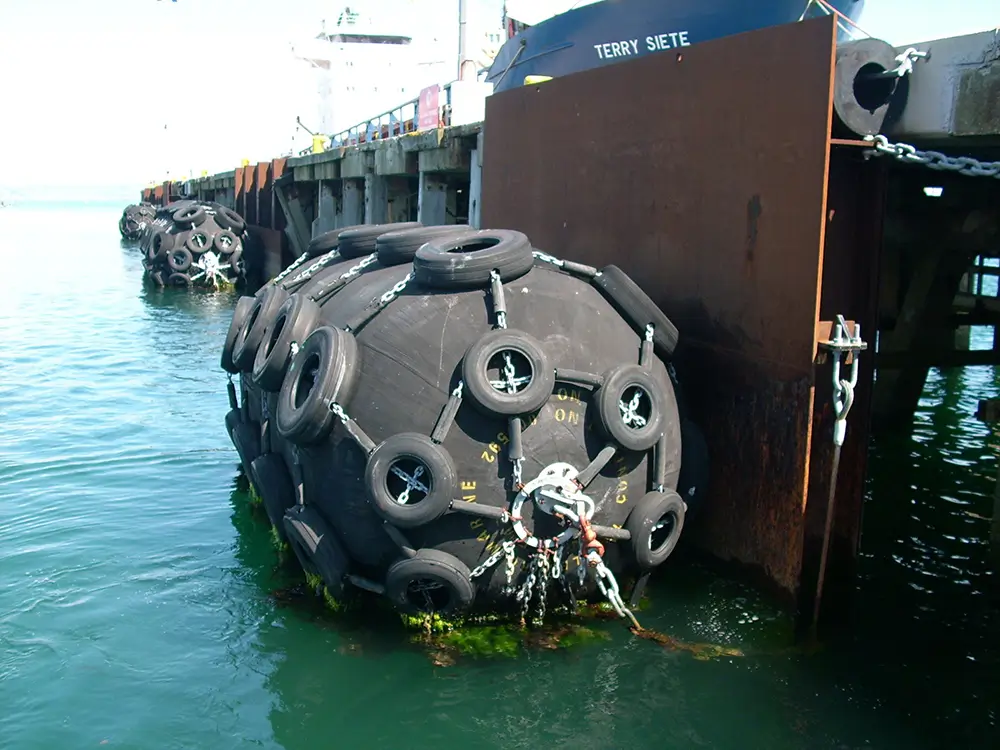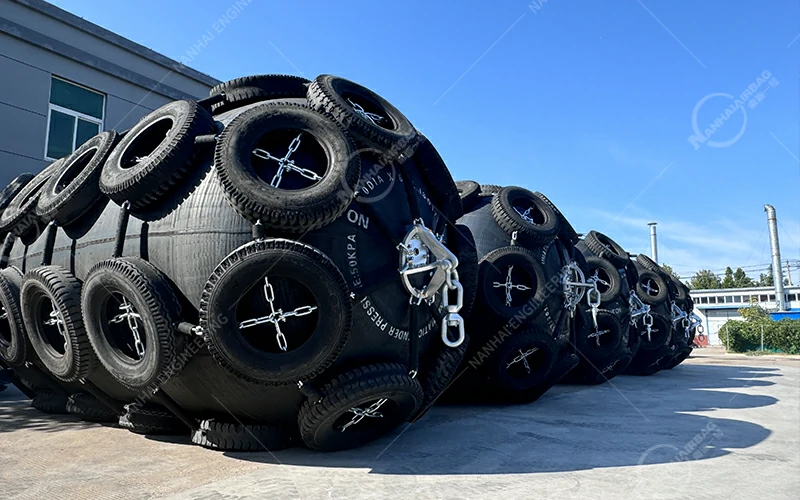What is a Cell Fenders System?
07/22/2025Top 5 Applications of Yokohama Pneumatic Rubber Fenders
07/23/2025How to Choose and Install Pneumatic Fenders | NANHAI
Introduction
Pneumatic fenders are essential in today’s busy ports. Whether you’re operating oil tankers, cargo ships, or offshore platforms, the right fender keeps your vessel and dock safe. At NANHAI, we specialize in providing reliable marine fender systems. In this guide, we’ll walk you through the key steps to choose, calculate, and install pneumatic fenders with confidence.

What Are Pneumatic Fenders?
Pneumatic fenders (also called Yokohama fenders) are air-filled marine bumpers. They float between ships and docks, absorbing collision energy to prevent damage. Designed for flexibility, they adjust to tide levels and vessel movements.
At NANHAI, we supply:
- Sling-type pneumatic fenders – Light, cost-effective
- Chain & Tire Net (CTN) fenders – Durable for harsh conditions
- Custom sizes & solutions for unique mooring environments

Step 1: Choosing the Right Pneumatic Fender
Know Your Vessel Type
The size and type of ship determine the energy absorption needed. For example, a bulk carrier needs a different fender than a passenger ferry.
Understand Your Dock Conditions
Consider tidal range, wave action, quay height, and mooring frequency.
Choose by Performance Needs and Budget
NANHAI offers both high-performance and economical options to fit any marine operation. All our fenders comply with ISO 17357 standards.
Tip from NANHAI engineers: Always choose a fender rated for your worst-case berthing scenario — not just the average.
Step 2: Calculating Fender Size and Energy Requirements
Key factors to calculate:
- Energy Absorption (EA) – How much energy the fender must absorb
- Reaction Force (RF) – The force pushed back on the ship or dock
Example:
For a 40,000 DWT vessel with 0.15 m/s approach speed:
→ Required EA = 120 kNm
→ Recommended fender: NANHAI 2.5m x 5.5m pneumatic fender (EA ≥ 132 kNm)
Use NANHAI’s free selection chart or contact our support team for a quick match.
Step 3: Installing Your Pneumatic Fender
Pre-installation checklist:
- Inspect fender for leaks or surface damage
- Check internal air pressure (50 or 80 kPa standard)
- Prepare mounting accessories (chains, shackles, ropes)
Installation methods by NANHAI:
- Floating installation – Attach to mooring rings on quay
- Hanging installation – Use chains and tire nets for CTN-type
- Custom systems – Designed to fit offshore or ship-to-ship operations
Positioning tips:
- Match height to the ship’s draft
- Leave space between the fender and the wall
- Use multiple fenders for longer berthing faces
Care and Maintenance
NANHAI recommends:
- Weekly pressure checks
- Regular inspection of chains and tires
- Storage in shaded, dry areas when not in use
- Re-inflation if pressure drops over time
With proper care, NANHAI fenders last 10+ years even in high-use ports.

Avoid These Common Mistakes
Using undersized fenders
Ignoring pressure ratings
Installing without aan lignment check
Skipping regular maintenance
Why Choose NANHAI Pneumatic Fenders?
- ISO 17357:2014 certified
- High-quality rubber and reinforcement
- Custom solutions for ports, terminals, and naval operations
- Fast delivery and technical support
- Trusted by global customers in over 40 countries
Conclusion
Choosing the right pneumatic fender doesn’t have to be difficult. With help from NANHAI, you get expert advice, certified products, and ongoing support. Let us protect your vessel — one fender at a time.
Need help choosing?
Contact NANHAI today for a free consultation and quote!
FAQ
How do I choose the right size pneumatic fender?
Check your vessel’s tonnage, berthing speed, and dock type. Use NANHAI’s fender chart or ask our engineers.
Can pneumatic fenders be reused after deflation?
Yes! NANHAI pneumatic fenders are fully reusable and easy to transport.
How often should I check the pressure?
At least once a week. NANHAI fenders come with built-in valves for easy pressure monitoring.
Do I need a chain and tire net on every fender?
Not always. CTN-type fenders are more durable for rough ports, while sling-types work well for lighter-duty berthing.
